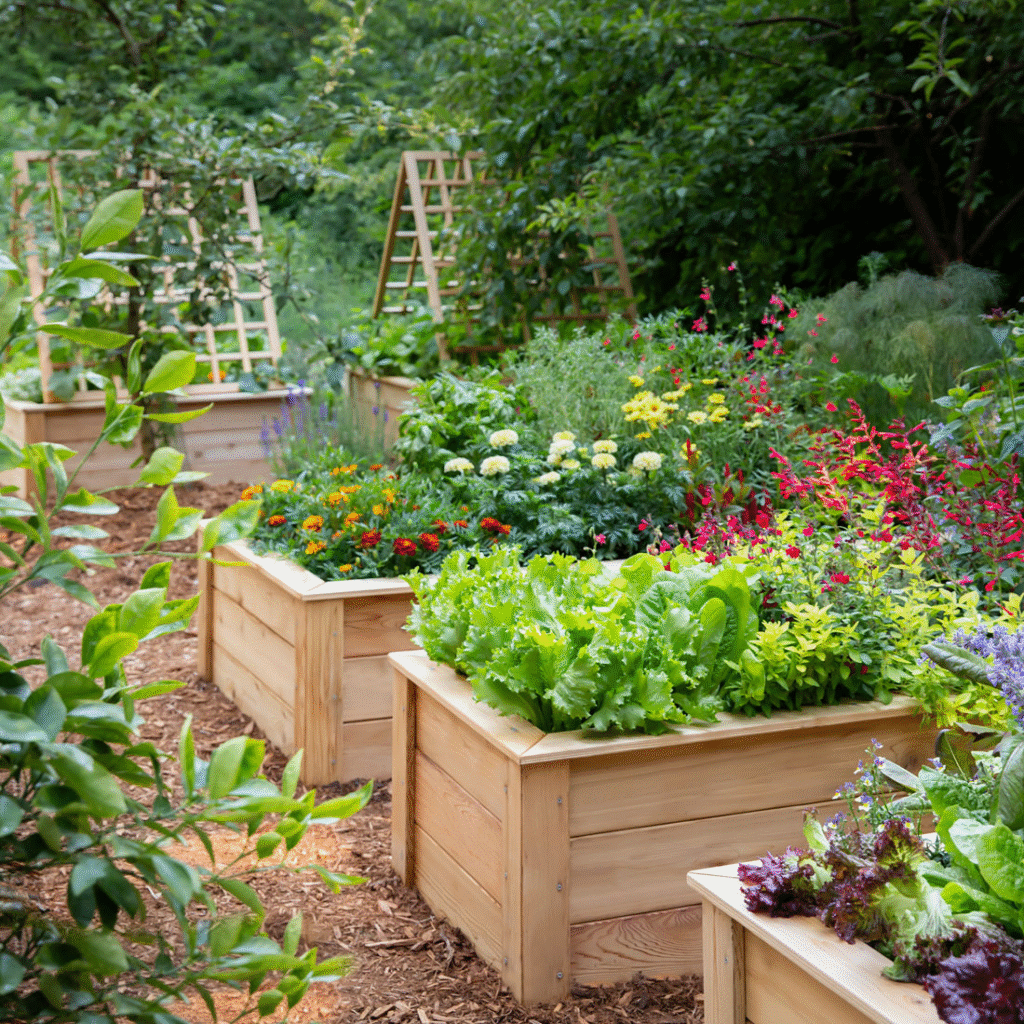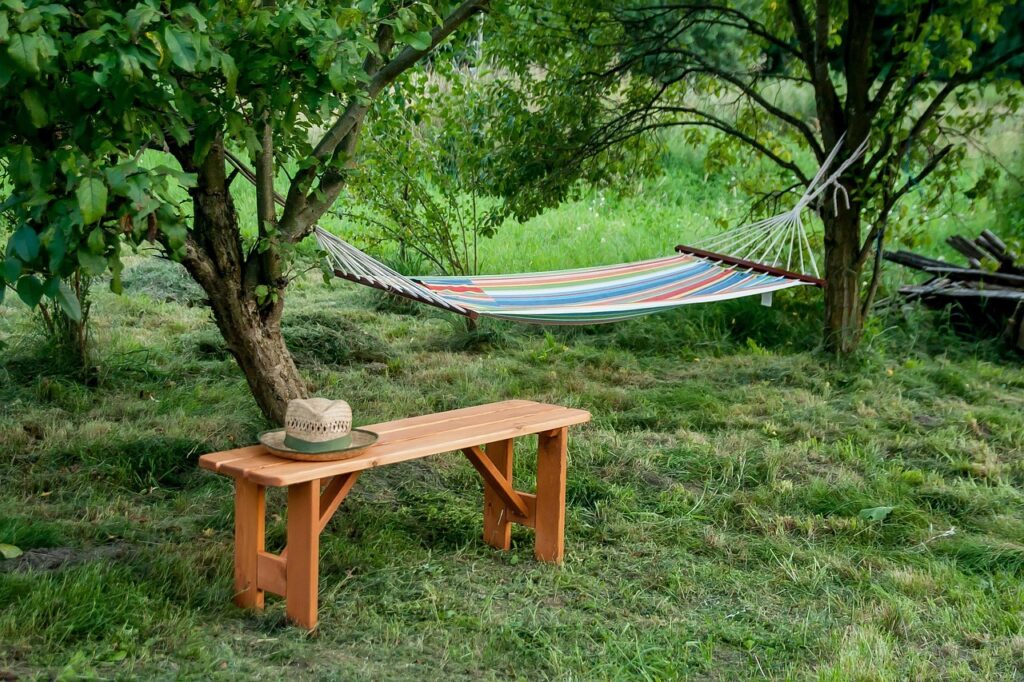Introduction
Last spring I retired my shovels-from-the-ground veggie patch and built a single raised garden bed behind the garage. Three months later I was harvesting lettuce free of clay clods (and back pain). Below is the exact playbook I wish I’d had—blending Extension-office science with “I-just-made-this-mistake” confessions—so your first bed starts strong.
Table of Contents
- Why a Raised Bed, Anyway?
- Picking the Perfect Spot & Size
- Best (and Safest) Materials
- How Deep Should a Bed Be?
- The Gold-Standard Soil Mix
- Assembly Tips & Drainage Tricks
- Seasonal Maintenance Checklist
- Top 5 Rookie Mistakes (I Made 3!)
- Extra Resources & Links
- FAQs
- Parting Thoughts
(Click any heading to jump.)
1 | Why a Raised Bed, Anyway?
- Loose, fast-warming soil = earlier planting and bigger yields.
- Ergonomics: 18–24 in. height keeps knees clean and spines happy.
- Micro-zone control: amend just what you fill, not your whole yard.
I also discovered kids are far more willing to weed a tidy 4 × 8 ft rectangle than an endless row.
2 | Picking the Perfect Spot & Size
- Sun: 6–8 hrs is the sweet spot for fruiting crops.
- Water: Close to a spigot; lugging cans loses its charm fast.
- Width: Cap at 4 ft so you can reach the center from either side.
- Length: 6–10 ft is easy to frame with standard lumber.
- Walkways: Leave at least 24 in. clearance for wheelbarrows.
3 | Best (and Safest) Materials
| Material | Pros | Cons | Lifespan* |
|---|---|---|---|
| Cedar / Redwood | Naturally rot-resistant, chemical-free | $$$ | 10–15 yrs |
| Douglas-fir + Linseed Oil | Budget-friendly | Needs reseal every 2 yrs | 5–7 yrs |
| Modern Pressure-Treated Pine | Inexpensive, long-lasting | Still scares purists | 15+ yrs |
Newer copper-based pressure-treated lumber (ACQ, CA-B) has no measurable plant risk according to University of Maine and Oregon State Extension guidance, as long as you avoid pre-2003 CCA boards Cooperative ExtensionOSU Extension Service.
For metal lovers, corrugated steel troughs look chic and heat soil quickly; just drill a few extra drainage holes near the base.
4 | How Deep Should a Bed Be?
Extensions and recent gardening press converge on 18–24 in. of loose soil for most veggies; deeper (30–36 in.) for carrots and parsnips The Spruce. If your native soil drains well, you can “cheat” by tilling 6 in. below grade and topping with a 12-in. frame—roots still get their 18 in.
5 | The Gold-Standard Soil Mix
My go-to recipe per 4 × 8 ft bed (12 in. tall):
- 6 cu ft screened topsoil
- 6 cu ft high-quality compost
- 2 cu ft coconut coir or peat moss
- 4 qt coarse perlite for drainage
- 2 cups granular organic fertilizer (5-5-5)
University of Maryland Extension recommends topping beds each fall with a 1- to 3-in. compost blanket to keep fertility high over the years University of Maryland ExtensionGuilford County Center.
6 | Assembly Tips & Drainage Tricks
- Square the corners with a carpenter’s square before driving deck screws.
- Add corner braces (galvanized L-brackets) on beds over 10 ft long.
- Line the bottom with overlapping cardboard—not plastic—to block weeds yet let excess water drain.
- If the bed sits on concrete, drill ½-in. holes along the lower boards and raise the frame on 1-in. patio pavers to create a drip gap.
7 | Seasonal Maintenance Checklist
| Season | Task |
|---|---|
| Early Spring | Top-dress with compost, mix in slow-release fertilizer |
| Late Spring | Mulch with shredded leaves or straw, install drip lines |
| Summer | Twice-weekly deep watering; inspect for pests |
| Fall | Remove spent crops, seed cover crop or add compost |
| Winter | Brush snow off frames; repair any popped screws |
8 | Top 5 Rookie Mistakes (I Made 3!)
- Too little sun: Lettuce forgave me, tomatoes did not.
- Over-packing soil: Heavy tamping collapses the fluffy structure you paid for.
- Skipping crop rotation: Root-nematodes loved my second-year kale.
- Using garden soil straight: Dense clay becomes a bathtub in a box.
- Ignoring width: My first 5-ft-wide monster required circus-level stretching.
Better Homes & Gardens published a great rundown of these slip-ups if you need more detail Better Homes & Gardens.
9 | Extra Resources & Links
- University of Maryland Extension – Soil to Fill Raised Beds (step-by-step depth & soil math) University of Maryland Extension
- The Spruce – Optimal Bed Depth Guide (depth by plant chart) The Spruce
Both articles helped me fine-tune my bed height and soil blend before I poured a single wheelbarrow.
10 | Frequently Asked Questions
Q: Should I line wood walls with plastic?
A: Skip impermeable liners; they trap water and speed rot. A breathable landscape cloth stapled to the boards keeps soil in place without waterlogging roots.
Q: Can I set a raised bed on pavement?
A: Yes—use a 14- to 18-in. frame, drill drainage holes along the bottom board, and watch watering frequency (concrete heats up fast).
Q: How long until the soil “settles”?
A: Expect a 10–15 % drop after the first heavy rain; simply top up with compost.
11 | Parting Thoughts
Building a raised garden bed is the single upgrade that turned my chore-heavy yard into a daily-joy oasis. Once you’ve squared the frame and fluffed the soil, the rest feels like bonus points—staking peas, sprinkling mulch, tallying harvest brag-pics. Use the science-backed tips above, avoid my rookie flubs, and you’ll be sharing zucchini by midsummer.
Got questions, or want pictures of my cedar-framed pride? Drop a comment—I’m always up for garden talk over dirt-rimmed coffee mugs.



